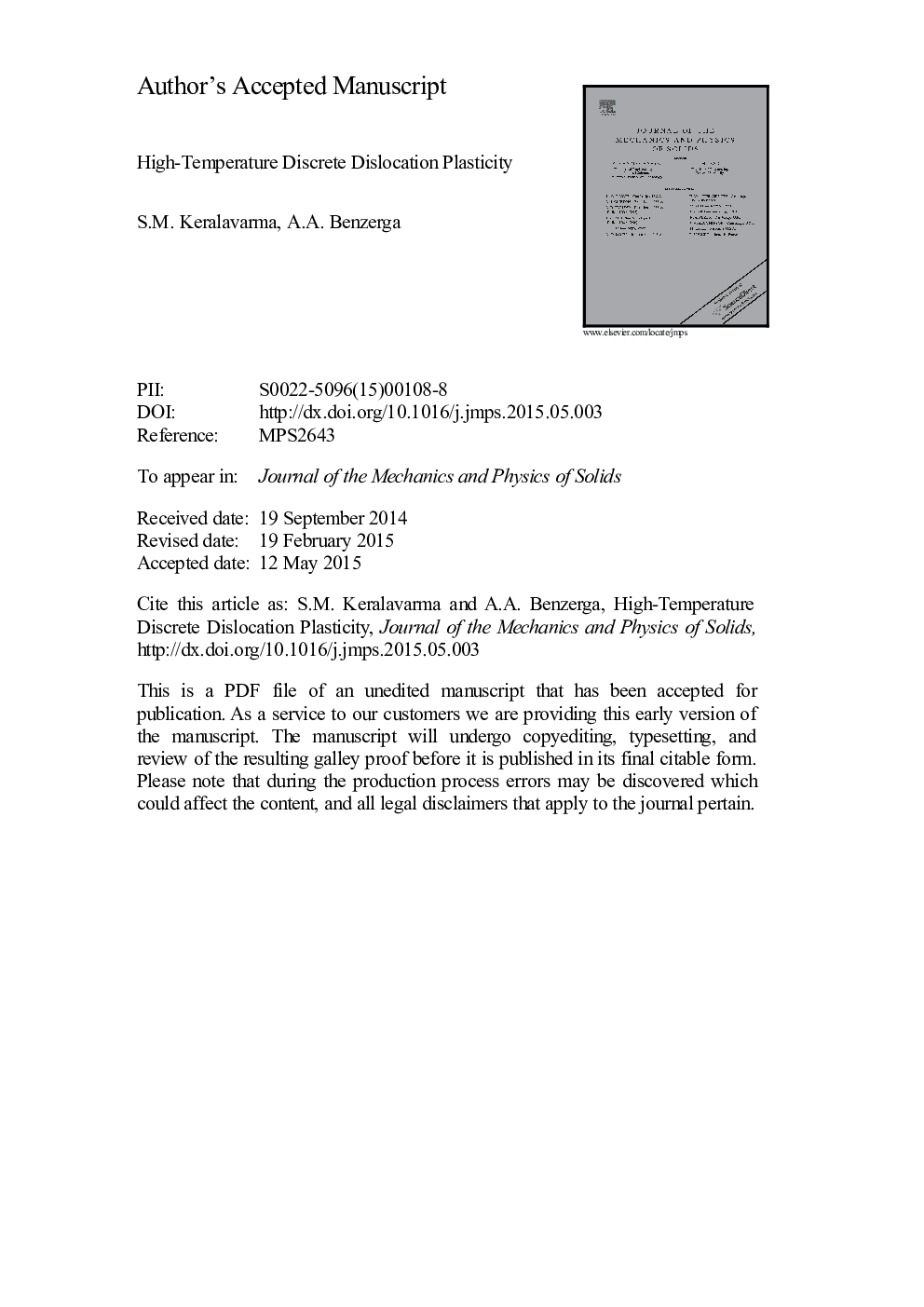| Article ID | Journal | Published Year | Pages | File Type |
|---|---|---|---|---|
| 7177964 | Journal of the Mechanics and Physics of Solids | 2015 | 38 Pages |
Abstract
A framework for solving problems of dislocation-mediated plasticity coupled with point-defect diffusion is presented. The dislocations are modeled as line singularities embedded in a linear elastic medium while the point defects are represented by a concentration field as in continuum diffusion theory. Plastic flow arises due to the collective motion of a large number of dislocations. Both conservative (glide) and nonconservative (diffusion-mediated climb) motions are accounted for. Time scale separation is contingent upon the existence of quasi-equilibrium dislocation configurations. A variational principle is used to derive the coupled governing equations for point-defect diffusion and dislocation climb. Superposition is used to obtain the mechanical fields in terms of the infinite-medium discrete dislocation fields and an image field that enforces the boundary conditions while the point-defect concentration is obtained by solving the stress-dependent diffusion equations on the same finite-element grid. Core-level boundary conditions for the concentration field are avoided by invoking an approximate, yet robust kinetic law. Aspects of the formulation are general but its implementation in a simple plane strain model enables the modeling of high-temperature phenomena such as creep, recovery and relaxation in crystalline materials. With emphasis laid on lattice vacancies, the creep response of planar single crystals in simple tension emerges as a natural outcome in the simulations. A large number of boundary-value problem solutions are obtained which depict transitions from diffusional to power-law creep, in keeping with long-standing phenomenological theories of creep. In addition, some unique experimental aspects of creep in small scale specimens are also reproduced in the simulations.
Related Topics
Physical Sciences and Engineering
Engineering
Mechanical Engineering
Authors
S.M. Keralavarma, A.A. Benzerga,
